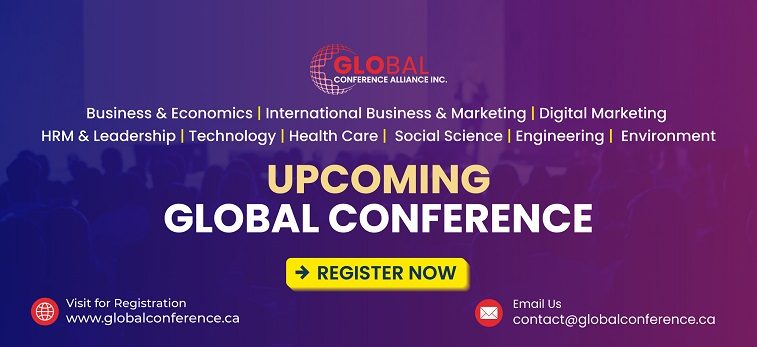Sharing your research or ideas at a conference is an exciting way to connect with experts and gain feedback. Presenters often use slides or posters to communicate their findings, helping others learn and collaborate. Many professionals value these opportunities for exposure and networking. But there’s often confusion about what counts as a publication.
So, it’s natural to wonder: Is a conference presentation a publication?
No, a conference presentation is not a publication. It’s a live talk shared at an event, not a written, peer-reviewed, or officially recorded work. Only a conference paper, reviewed and published in proceedings, is considered a true publication.
Keep reading to understand the key differences and learn how to properly list your conference work for academic recognition.
Is a Conference Presentation a Publication?
A conference presentation is a way to share your research or ideas with others at an event, but it is not considered a formal publication. Unlike published papers, presentations are usually not peer-reviewed or permanently recorded in official proceedings. They showcase work, but don’t count as published research. Let’s discuss the differences between conference publication and presentation, so you might have a better understanding of the two:

What is Considered a Publication in Academia?
In academia, a publication is a written work that has been formally reviewed, approved, and made publicly available through a recognized outlet such as a journal, book, or conference proceeding. It represents a researcher’s verified contribution to knowledge and is part of the permanent academic record. Before publication, most works undergo a peer review process, where subject experts evaluate the quality, originality, and credibility of the research.
Once accepted, the work is indexed in academic databases like Scopus, Web of Science, or Google Scholar, allowing others to cite it officially. These publications often emerge from global academic events; for instance, research first presented at upcoming conferences in Canada, the United States, or Australia may later become peer-reviewed publications once written, reviewed, and published in official proceedings.
What Counts as a Conference Presentation?
A conference presentation is a way for researchers and professionals to share their ideas, findings, or projects with an academic or industry audience. There are several common types of conference presentations, each serving a unique purpose:
- Oral Presentation: A spoken presentation, often supported by slides, where the presenter discusses their research in front of an audience.
- Poster Presentation: A visual display summarizing a study or concept, allowing attendees to ask questions in an informal setting.
- Invited Talk: A presentation given by a recognized expert, usually by invitation from the organizers, highlighting specialized insights or experience.
- Abstract-Only Presentation: When only a short summary or abstract of the research is shared in the conference booklet, but no full paper is published.
Each form helps build professional visibility, but doesn’t automatically count as a publication unless the full paper is later peer-reviewed and officially published.
Difference Between a Conference Presentation and a Publication
| Aspect | Conference Presentation | Publication |
| Purpose | To share ideas, ongoing research, or findings with peers at an event. | To formally document completed research for academic or professional recognition. |
| Format | Delivered orally, as a poster, or an invited talk (live presentation). | Written work published in a journal, book, or conference proceeding. |
| Peer Review | Usually not peer-reviewed; may be accepted based on abstract or proposal. | Peer-reviewed by experts to ensure accuracy and originality before publication. |
| Permanence | Temporary; not always recorded or stored publicly. | Permanent; archived, and indexed in academic databases. |
| Recognition | Demonstrates participation, communication skills, and professional engagement. | Counts as formal academic output and can be cited by others. |
| Indexing | Rarely indexed in databases. | Indexed in recognized databases like Scopus or Web of Science. |
| Example | A presentation at an international conference in Sydney or Toronto. | A full paper published after being reviewed and included in official conference proceedings. |
When a Conference Presentation Can Be a Publication?
Sometimes people wonder if their conference talk can count as something officially published. Many students present their ideas at events and want to know if that means their work is “published.” It’s a common question among young researchers who share early results. Let’s look at when a conference presentation can actually be called a publication.
Peer-Reviewed Papers
A conference presentation can count as a publication if it comes with a peer-reviewed paper. This means that before your paper is accepted, experts carefully read and check it for quality. When the conference committee approves and publishes it, your work officially becomes part of your academic records. This process makes sure your research meets proper standards and can be trusted by others.
Conference Proceedings
Conference proceedings are special books or online collections that include all the accepted papers from a conference. If your paper is part of these proceedings, then it’s considered a publication. These proceedings may have an ISBN or DOI, making them easy to find online. Presentations that are not written or included in the proceedings, however, don’t count as formal publications.
Indexed Databases
Some conferences publish papers in online databases such as Scopus or IEEE Xplore. These are trusted places where researchers can read and cite other works. Once your paper appears in one of these databases, it becomes a formal publication that others can use for citing conference presentation or research purposes. Being indexed means your work is officially recognized and easy to access.
Workshop Papers
Workshops are smaller events linked to big conferences. Sometimes, the papers presented there are peer-reviewed and published online. In certain fields like computer science, these workshop papers are treated as real publications. However, it’s always important to clearly label your paper as a “workshop paper” when you include it in your CV or academic profile.
When It Doesn’t Count
If you only give a talk or show a poster without a written paper, it doesn’t count as a publication. Even though presentations are great for sharing ideas and getting feedback, they are not reviewed or stored in databases. Still, they play an important role in helping others learn about your work early on.
When Doesn’t It Count as a Publication?
Not every conference talk or poster is counted as a publication. If you only give a speech, show a poster, or share your ideas at an event without a written paper being published, it’s not considered a formal publication. These presentations are a way to share your research early and get feedback from others, but they aren’t reviewed or stored in any official record.
For example, if you present your study at a conference but don’t submit a full paper to the proceedings, your work stays as a presentation only. It doesn’t appear in academic databases or get a DOI, which means others can’t formally cite it.
So, while oral and poster presentations are great for learning and visibility, they don’t count as publications unless they’re later written, reviewed, and published in official conference proceedings.
How to List Conference Presentations on Your CV?
Many people present their research at conferences, but aren’t sure how to include it in their CV. Listing it properly helps show your academic work clearly. It tells others what kind of research you’ve shared and where. Let’s learn the right and simple way to do it.
Create a Separate Section
Always make a separate section for your conference presentations. You can name it “Conference Presentations” or “Academic Presentations.” This helps your CV look neat and organized. Putting it under “Publications” can confuse readers since not all presentations are published papers. Keeping them in their own section makes it easy for others to see where and when you presented your work.
Use the Right Order
List your presentations in reverse order, starting with the most recent one. This lets people see your latest work first. Each entry should include the title of your presentation, your name, the conference name, date, and place. You can also add if it was oral, poster, or invited. This way, your list looks tidy and easy to read.
Follow a Simple Format
When you write each presentation, keep the format simple. Start with your name, then the year, the title of your presentation in italics, followed by the conference name and location.
For example:
“Rahman, S. (2024, July). Climate Change Effects on Local Crops. Presented at the Global Environmental Conference, Toronto, Canada. This format makes your CV look professional and easy to understand.”
Include Presentation Type
It’s important to mention the type of presentation. If it was an oral talk, poster, or invited session, write it clearly. This gives people a quick idea about your role in the event. For example, “Oral Presentation” shows active speaking, while “Poster Presentation” highlights visual communication. Each type shows your participation in a unique way and adds value to your CV.
Add Conference Details
Always include the conference name, date, and location. It shows where your research was shared and adds authenticity. If the conference is well-known or international, it’s even better to highlight it. For instance, mentioning an international event helps your CV look stronger and more credible. Accurate details show honesty and professionalism in how you present your work.
When It’s Published
Sometimes, your conference paper might be published later in the proceedings or a journal. In that case, you can list it under Publications instead of Presentations. If it’s both presented and published, you can include a note like “Also published in conference proceedings.” This shows that your work went through peer review and is formally recognized.
Referencing and Citations
If you want to include or cite your presentation in other works, make sure to follow a proper style. Learning about referencing conference presentation methods, such as APA or MLA style, helps you do it correctly. Writing it in the right way shows attention to detail and helps others find your research easily when they read your academic or professional profile.
How Do Different Fields Treat Conference Presentations?
Different subjects see conference presentations in different ways. Some think they are very important, while others see them as small steps before real publication. Let’s see how different fields treat them.
Computer Science
- In computer science, many conferences are big events where people share new ideas and tools. These papers are often checked by experts before being shown.
- Presenting at tech events helps share new work fast, especially in areas like coding, AI, or software design. It keeps everyone up to date.
Engineering
- Engineers use conferences to show new machines, designs, or models before final testing. It helps them get advice and fix problems.
- Some engineering events are also important for companies, so sharing work there helps reach both researchers and real builders.
Medical Sciences
- Doctors and researchers talk about new treatments or studies at medical events. These talks share updates before they are printed in journals.
- A medical talk is useful for learning, but not counted as a real publication until it’s reviewed and printed later.
Social Sciences
- In subjects like sociology or psychology, people use conferences to talk about new ideas. They are not seen as full publications.
- These meetings help researchers discuss results, share opinions, and plan better studies for the future.
Humanities
- Writers, historians, and language experts use conferences to share thoughts and stories. They don’t treat them as published work.
- The goal is to exchange ideas and get feedback, not to make an official paper for a journal.
Business and Management
- Business researchers show their work at events to test if their ideas make sense. They often update them later for journals.
- These talks also connect people from schools and companies, helping them work together on real problems.
Environmental Sciences
- Scientists talk about climate, pollution, and nature at global events. This helps spread news quickly to others around the world.
- Even if not published, these talks still matter because they help solve real environmental issues faster.
Education Studies
- Teachers and researchers share how students learn and how to make classes better. These talks help everyone improve.
- Most of these presentations don’t become publications, but they are still very helpful for learning and teaching ideas.
FAQs About Publication Status of Conference Papers
Many people still have small doubts about how conference presentations work in academics. Some are unsure about recognition, credit, or how it affects their profile. Here are a few common questions that clear up more details on this topic.
Can I Cite My Own Conference Presentation?
Yes, you can cite your own presentation if it is publicly available or listed in conference records. Use the correct citation style, like APA or MLA, and make sure the details are clear enough for others to find them easily.
Does a Conference Presentation Improve My Academic Profile?
Yes, conference presentations show active participation in research, communication skills, and collaboration. Even though they’re not formal publications, they demonstrate initiative and subject knowledge, which can strengthen your resume, academic applications, and future research opportunities.
Can I Publish My Conference Presentation Later As a Paper?
Yes, many presenters turn their conference talks into full papers. You can expand your presentation into a detailed article and submit it to a journal or conference proceedings. Just make sure it meets publication requirements and adds new insights.
Do Conference Presentations Have DOI Numbers?
Most conference presentations don’t have DOI numbers unless they’re published in official proceedings. Only peer-reviewed papers that are accepted and indexed receive DOIs. Regular talks or posters remain unregistered but can still be referenced informally if needed.
Can a Conference Abstract Be a Publication?
A conference abstract alone is not a full publication. It’s only a short summary of your work. Abstracts are useful for selection or sharing ideas, but they don’t count as peer-reviewed research or appear in indexing databases.
Are Conference Presentations Graded in Academia?
In academic settings, conference presentations are not graded like assignments. However, they’re often valued during research evaluations or scholarship applications. They reflect your contribution to knowledge-sharing and can be mentioned as achievements in your academic CV.
What Is the Difference Between Conference Proceedings and Journals?
Conference proceedings publish papers presented at specific events, while journals accept submissions anytime and have longer review cycles. Proceedings are faster but often shorter, while journals usually carry higher academic weight and longer-lasting recognition.
Can I Add Conference Presentations to ResearchGate or Google Scholar?
Yes, you can add them under the “Presentations” or “Conference” section. These platforms let you share slides or summaries. Even if not peer-reviewed, listing them helps others see your research interests and ongoing projects, boosting your visibility online.
Final Briefs
Conference presentations are a simple and useful way to share your ideas and meet people who work in the same field. They help you learn, improve your research, and gain confidence when speaking. Still, whether is a conference presentation a publication depends on whether your paper is written, checked by experts, and published officially.
A normal talk or poster does not count as a real publication. Even so, presenting at a conference is very helpful. It lets others know about your work, gives you feedback, and helps you prepare for future research or real publications.







